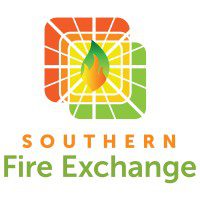Webinar
Webinar registration.
From building firelines to researching fire trends over time, fire management and science require great communication to be successful. Our panel will share their experiences and tips on how to effectively talk about fire to gain support and build a collaborative network. We’ll address your questions about fire science communication and discuss best practices for defining objectives, connecting with your audience, and tools/resources that can help along the way.
Webinar recording.
Climate Impacts on Regeneration-
Hear from three subject-matter experts on seedling success across elevational ranges and with varying genotypes:
Justin Crotteau, Research Forester, Rocky Mountain Research Station
Aalap Dixit, Assistant Professor, New Mexico Highlands University
Bryce Richardson, Research Geneticist, Rocky Mountain Research Station
Indigenous Knowledge Exchange and Work on the Ground!
Hear from two case study experts on utilizing Indigenous knowledge for cultural values on pre- and post-burned landscapes:
James Calabaza, Trees Water People
Nona (Nanebah) Lyndon, Tribal Relations Staff Officer, Tonto National Forest, Kaibab National Forest
Sara Souther, Assoc. Professor, Northern Arizona University
Policy In The Works-
An update on the RePlant Act, and implications for land managers.
Kas Dumroese, National Nursery Specialist & Research Plant Physiologist, Rocky Mountain Research Station
Webinar recording.
This webinar features insights and lessons from three communities in Colorado —the City of Colorado Springs, Eagle County, and Ouray County— and their successful approaches to local adoption and enforcement of wildfire regulations. This webinar is based on a new report from the Community Wildfire Planning Center, Regulating the Wildland-Urban Interface in Colorado.
Webinar recording.
This presentation discusses the following topics as they relate to rangelands:
- Resistance and Resilience are commonly used terms in discussions about agriculture and preparing for the future.
- Provide a common understanding of these terms as they apply to the ecology of grazed systems.
- Relationships between ecological resistance and resilience, disturbances, and ecological processes will be discussed.
Webinar recording.
This presentation discusses a pilot project in partnership with the BC Cattlemen’s Association and the Province of British Columbia that uses cattle grazing to reduce wildfire risk in wildland-urban interface areas. Amanda Miller, of Palouse Rangeland Consulting is engaged as the liaison, coordinator, and researcher for the development, pilot, and testing of livestock use models for fine fuel management.
Webinar recording.
This presentation shares results from a recent region-wide field survey of sagebrush rangelands in Oregon and Idaho, where we examined drivers of annual grass invasion at local and regional scales, and how grazing intensity at different scales can interact with environmental determinants of vegetation.
Webinar recording.
How will you deliver your message to the right people?
Rangeland professionals know a lot about rangeland ecology and management, but not about marketing, especially online communication. Online communication is here to stay, investing time now to learn more about it will prepare you for the future.
Webinar recording.
What are you saying to them and what should they do?
Rangeland professionals know a lot about rangeland ecology and management, but not about marketing, especially online communication. Online communication is here to stay, investing time now to learn more about it will prepare you for the future.
Webinar recording.
Who are you talking to?
Rangeland professionals know a lot about rangeland ecology and management, but not about marketing, especially online communication. Online communication is here to stay, investing time now to learn more about it will prepare you for the future.



